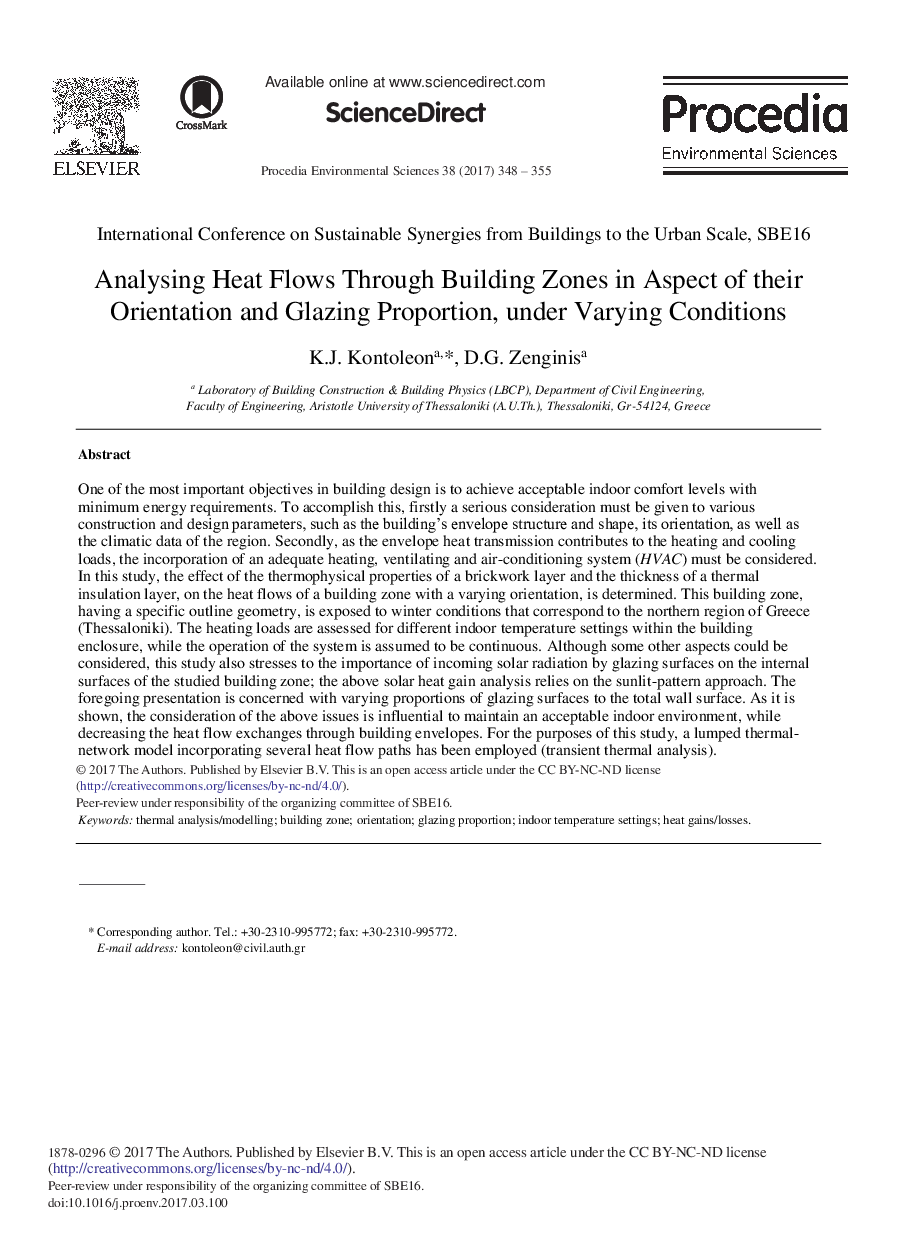| Article ID | Journal | Published Year | Pages | File Type |
|---|---|---|---|---|
| 5745049 | Procedia Environmental Sciences | 2017 | 8 Pages |
One of the most important objectives in building design is to achieve acceptable indoor comfort levels with minimum energy requirements. To accomplish this, firstly a serious consideration must be given to various construction and design parameters, such as the building's envelope structure and shape, its orientation, as well as the climatic data of the region. Secondly, as the envelope heat transmission contributes to the heating and cooling loads, the incorporation of an adequate heating, ventilating and air-conditioning system (HVAC) must be considered. In this study, the effect of the thermophysical properties of a brickwork layer and the thickness of a thermal insulation layer, on the heat flows of a building zone with a varying orientation, is determined. This building zone, having a specific outline geometry, is exposed to winter conditions that correspond to the northern region of Greece (Thessaloniki). The heating loads are assessed for different indoor temperature settings within the building enclosure, while the operation of the system is assumed to be continuous. Although some other aspects could be considered, this study also stresses to the importance of incoming solar radiation by glazing surfaces on the internal surfaces of the studied building zone; the above solar heat gain analysis relies on the sunlit-pattern approach. The foregoing presentation is concerned with varying proportions of glazing surfaces to the total wall surface. As it is shown, the consideration of the above issues is influential to maintain an acceptable indoor environment, while decreasing the heat flow exchanges through building envelopes. For the purposes of this study, a lumped thermal-network model incorporating several heat flow paths has been employed (transient thermal analysis).
